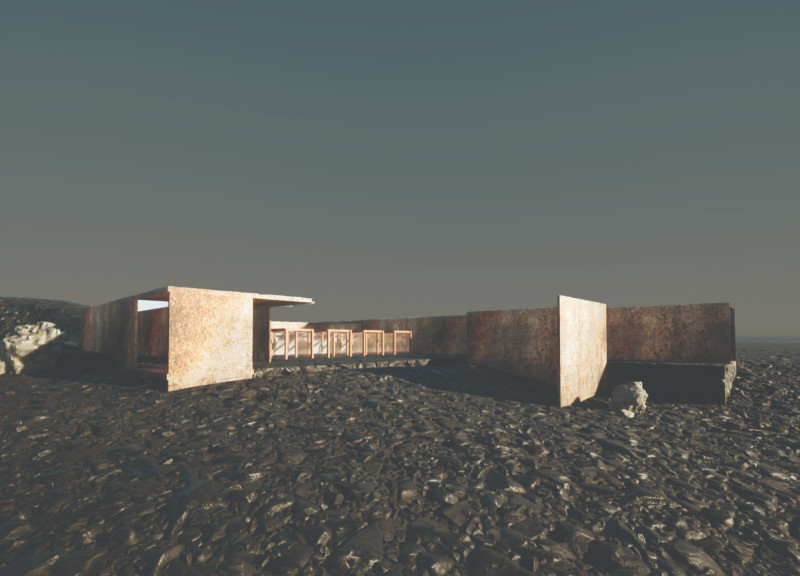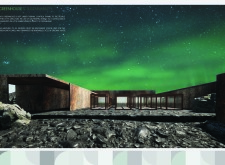5 key facts about this project
The Iceland Greenhouse Restaurant is located in a volcanic area, combining the functions of a dining space and a greenhouse. The design aims to create connections between the built environment and natural surroundings. It invites visitors to experience food in a setting that merges architecture with agriculture, emphasizing harmony with the landscape.
Design Concept
The project uses a modular design that allows for future expansion without disrupting the relationships among spaces. Different areas, such as the restaurant, greenhouse, service facilities, and gardens, are interconnected. A serpentine wall runs through the site, linking all sections together. This wall not only provides structure but also frames the views of the landscape, making it an essential part of the overall design.
Spatial Organization
Inside, the restaurant accommodates various dining arrangements, including large communal tables and smaller, private settings. This flexibility enables different experiences for guests. The layout is oriented along two main sight lines: one directed toward the volcanic landscape and the other focusing on the interior. This careful organization enhances the connection between diners and their surroundings, enriching their overall experience.
Sustainability and Ecology
Sustainability plays a key role in this design. Each greenhouse unit features a double-layered construction that helps manage temperature and reduce energy consumption. Geothermal energy is used as a renewable power source, minimizing the building’s ecological footprint. Additionally, waste from the restaurant is processed and returned to the greenhouse, creating a cycle that nourishes the plants and supports local food production.
Material and Experience
The project incorporates materials such as rusty metal tones, wood, and greenery to enhance its visual appeal. Areas designed for collecting and purifying water also serve as integral elements of the experience, adding both functionality and aesthetic value. This thoughtful integration of materials and features contributes to a rich atmosphere, inviting visitors to connect with both the building and the natural environment.






















































